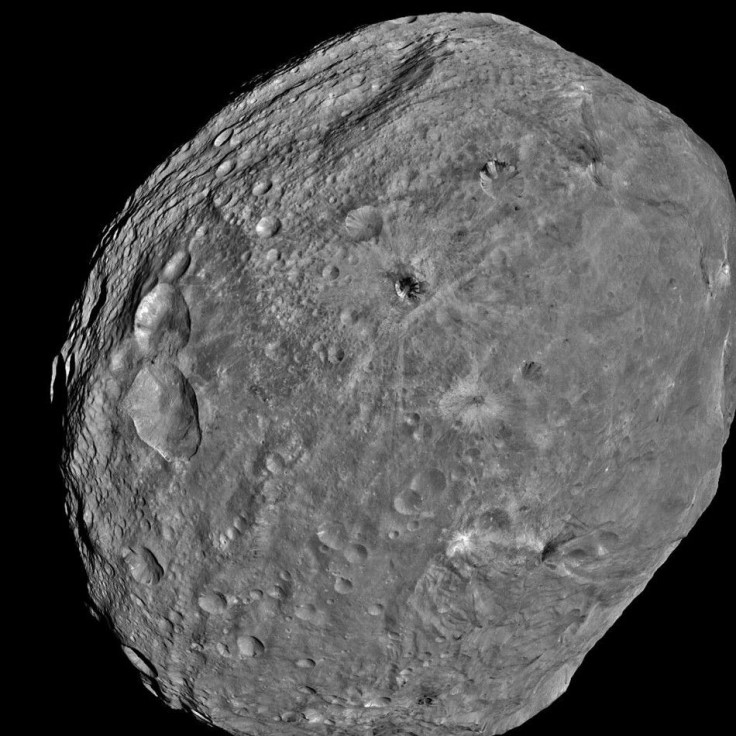Giant Mountain on Asteroid Vesta Dwarfs Mount Everest

Mt. Everest might be the highest mountain on Earth, but it's only about half of the height of a peak on Vesta, a giant asteroid.
An image of the mountain comes from the Dawn spacecraft. The mountain rises 13 miles above the average height of the surrounding terrain. The tallest mountain in the solar system is Olympus. It edges out the Vesta mountain and peaks 15 miles above the Martian landscape. Mt. Everest only rises to 6 miles above sea level.
Vesta is the second most massive object in the asteroid belt, located between the orbits of Mars and Jupiter. It accounts for almost 10 percent of the belt's mass.
Vesta is named after the Roman goddess of hearth and home.
The Dawn spacecraft launched in 2007 and entered the orbit of Vesta this July. After it studies Vesta for a year it will depart for Ceres, the solar system's most massive asteroid, in July 2012 and will arrive in 2015.
Dawn's main mission objective is to study the role of size and water during the evolution of planets. Vesta and Ceres are the biggest proto planets in the solar system.
The two asteroids were on their way to becoming planets until their growth was stunted by Jupiter. Ceres is very primitive and wet where Vesta is more evolved and drier, NASA scientists say.
Members of the mission team will discuss what Dawn has discovered so far during its journey at a news conference during the Annual Meeting of the Geological Society of America in Minneapolis. The event will be aired live Wednesday at 10 a.m. PDT on the Geological Society of America's Web site.
© Copyright IBTimes 2024. All rights reserved.











